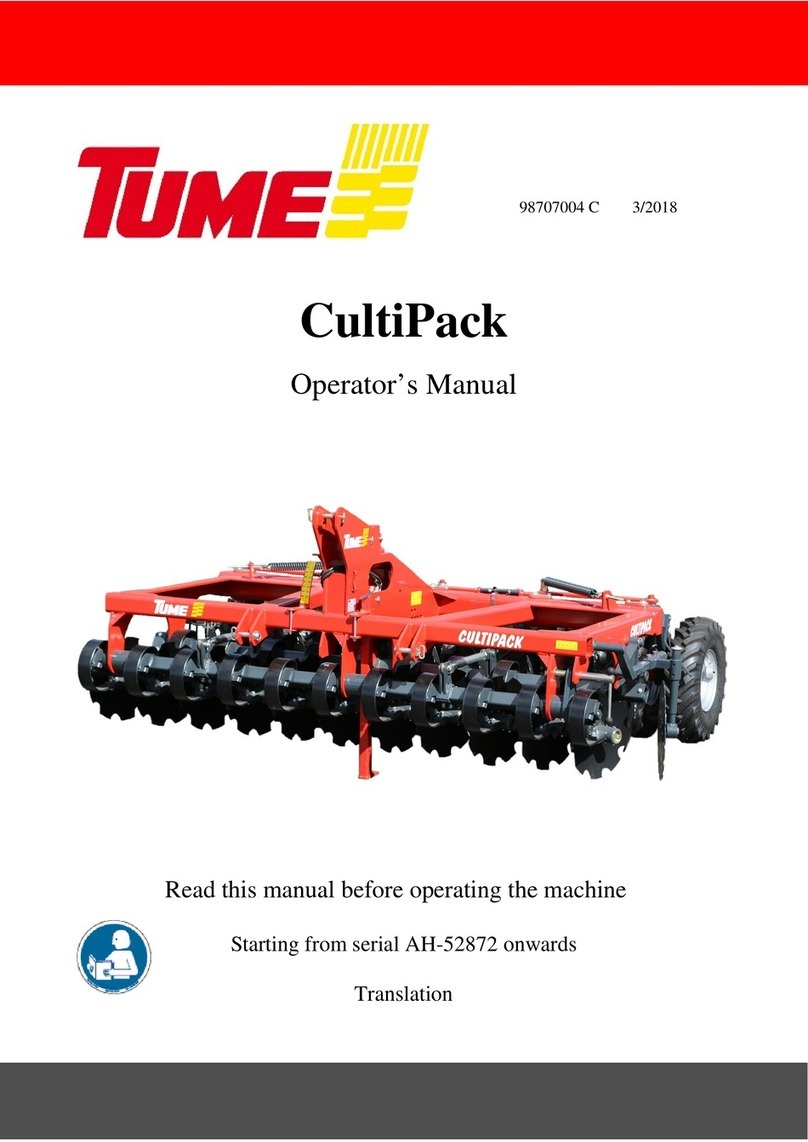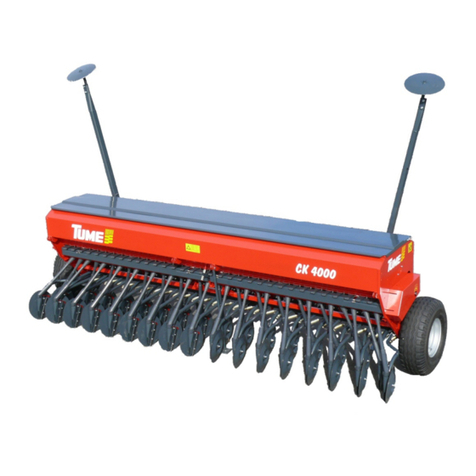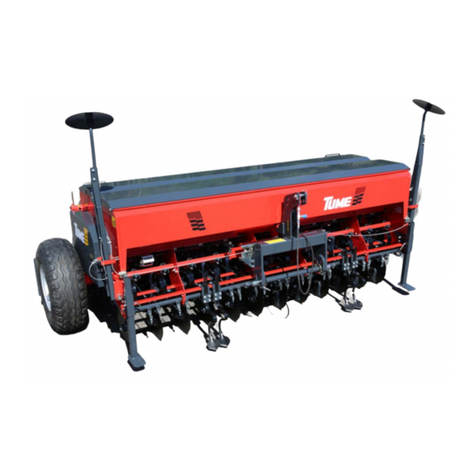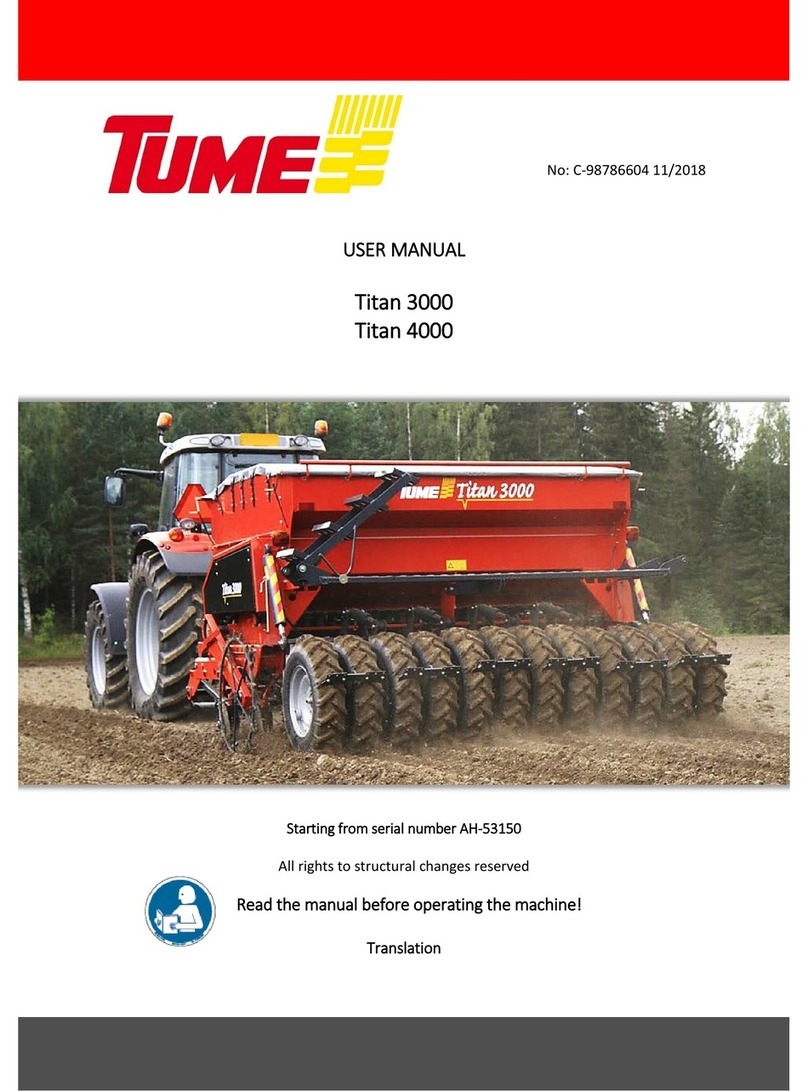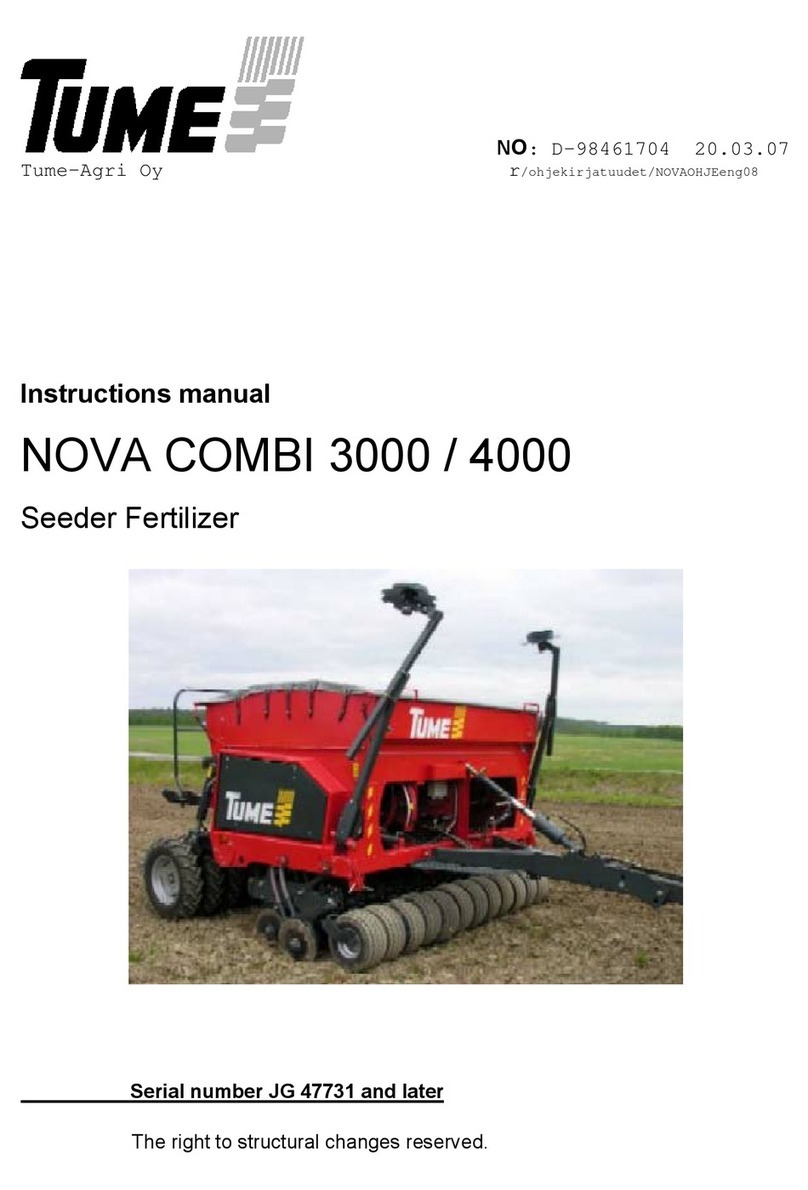
5
8.2.6Transmission cassette, seed................................................................................24
8.2.7Calibration troughs................................................................................................24
9.SEEDING DEPTH ADJUSTMENT......................................................................................24
9.1Coulter pressure’s effect to the seeding depth ............................................................26
10.REAR HARROW ADJUSTMENT....................................................................................26
11.USER INTERFACE.........................................................................................................28
11.1Settings........................................................................................................................28
11.1.1Total area, worktime, tire and height setting, simulated speed etc......................29
11.1.2Diagnostics...........................................................................................................30
11.1.3Features................................................................................................................30
11.2Seeding menu..............................................................................................................31
11.2.1Area-, work time and seeding amount meters 6 pcs ............................................32
11.2.2Tramlines..............................................................................................................32
11.2.3ISOBUS task controller icons ...............................................................................33
11.2.4Coulter pressure adjustment, height data and active feeding rate .......................36
11.2.5Ritsi -marking........................................................................................................37
11.2.6Halving left............................................................................................................37
11.2.7Halving right..........................................................................................................37
11.2.8Marker, left, L........................................................................................................38
11.2.9Marker, right, R.....................................................................................................38
11.2.10Marker automatic function.................................................................................38
11.2.11Return ...............................................................................................................39
11.2.12Alarm acknowledgement...................................................................................39
11.2.13Pole lift ..............................................................................................................39
11.2.14Half lift...............................................................................................................39
11.2.15SETUP..............................................................................................................41
11.2.16Pause for tramline counter and marker automatics ..........................................41
11.2.17Power plug operation........................................................................................42
11.2.18Seeding profile settings.....................................................................................42
11.2.19Seeding profiles 3 pcs.......................................................................................43
11.2.20Shaft rotation monitoring...................................................................................43
11.2.21Speed display....................................................................................................44
11.2.22Hopper level monitoring....................................................................................45
11.2.23Prestart – corner seeding..................................................................................46
12.CALIBRATION.................................................................................................................47
12.1Preparations for the calibration test.............................................................................47
12.2Calibration test for the fertilizer....................................................................................51
12.3Calibration test for the seeds.......................................................................................53
12.4Calibration test for small seed / star fertilizer unit (optional equipment) ......................55
13.FIELD TEST....................................................................................................................57







